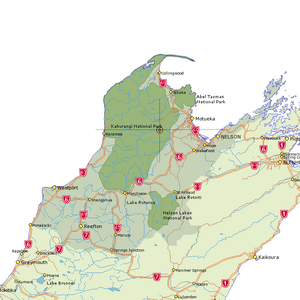| Synthetonychia florae | |
|---|---|
 Synthetonychia florae Forster, 1954 (from original description) | |
|
Suborder |
|
|
Superfamily |
|
|
Family |
|
|
Genus |
|
Synthetonychia florae Forster, 1954 belongs to the genus Synthetonychia (Laniatores:Synthetonychiidae).
Taxonomy[]
Specimens[]
- S.f. male(1) (holotype): Dominion Museum, Wellington; #2/886[1]
- S.f. female(1) (paratype): Dominion Museum, Wellington; #2/887[1]
Diagnosis[]
(from Forster, 1954[1])
- Color: Reddish-brown.
- Body: The eyes are placed in the centre of the carapace and are separated from each other by a distance equal to 1½x their diameter. The carapace is finely granulate, tergal region with normal granular pattern. The genital operculum is as shown in Fig. 769, sub-triangular longer than wide in the rato of 4:3.
- Genitalia: As shown in Fig. 768. Similar in structure to acuta but aedeagus shorter and lacking the sub-apical lateral spines, setae with a somewhat different disposition. Dorsal and ventral plates well developed.
- Chelicerae: Typical.
- Pedipalls: (Fig 766). Tibial process absent, tarsus stouter than acuta, tarsal spine slender equal to ½ of the length of the tarsal claw.
- Legs: As in acuta. Tarsal formula 3.5.4.4. Tarsal claws as shown in Fig. 770, the arolium does not extend beyond the median branch.
- Measurements (mm): Scute: 1.24x0.90; Legs: 2.45, 3.19, 2.85, 3.50; Pedipalp: 1.74; Chelicera: 0.58
- Female: Similar to male in structure. The genital operculum is wider than it is long. The pedipalp is shown in Fig. 767; the tarsus is slender and straight, without a spine.
- Measurements (mm): Scute: 1.24x0.90; Legs: 2.23, 2.89, 2.36, 3.10; Pedipalp: 1.77; Chelicera: 0.62
Notes[]
- Location: Mount Arthur Tableland, Kahurangi National Park, New Zealand (South Island)[1]
Literature[]
Additional images - Gallery[]
References[]
- ↑ 1.0 1.1 1.2 1.3 1.4 1.5 Forster, R.R. (1954) The New Zealand harvestmen (sub-order Laniatores). Canterbury Museum bulletin, Christchurch, 2, 1–329.
- ↑ Kury AB, Mendes AC & Souza DR (2014) World Checklist of Opiliones species (Arachnida). Part 1: Laniatores – Travunioidea and Triaenonychoidea. Biodiversity Data Journal 2: e4094. doi: 10.3897/BDJ.2.e4094
